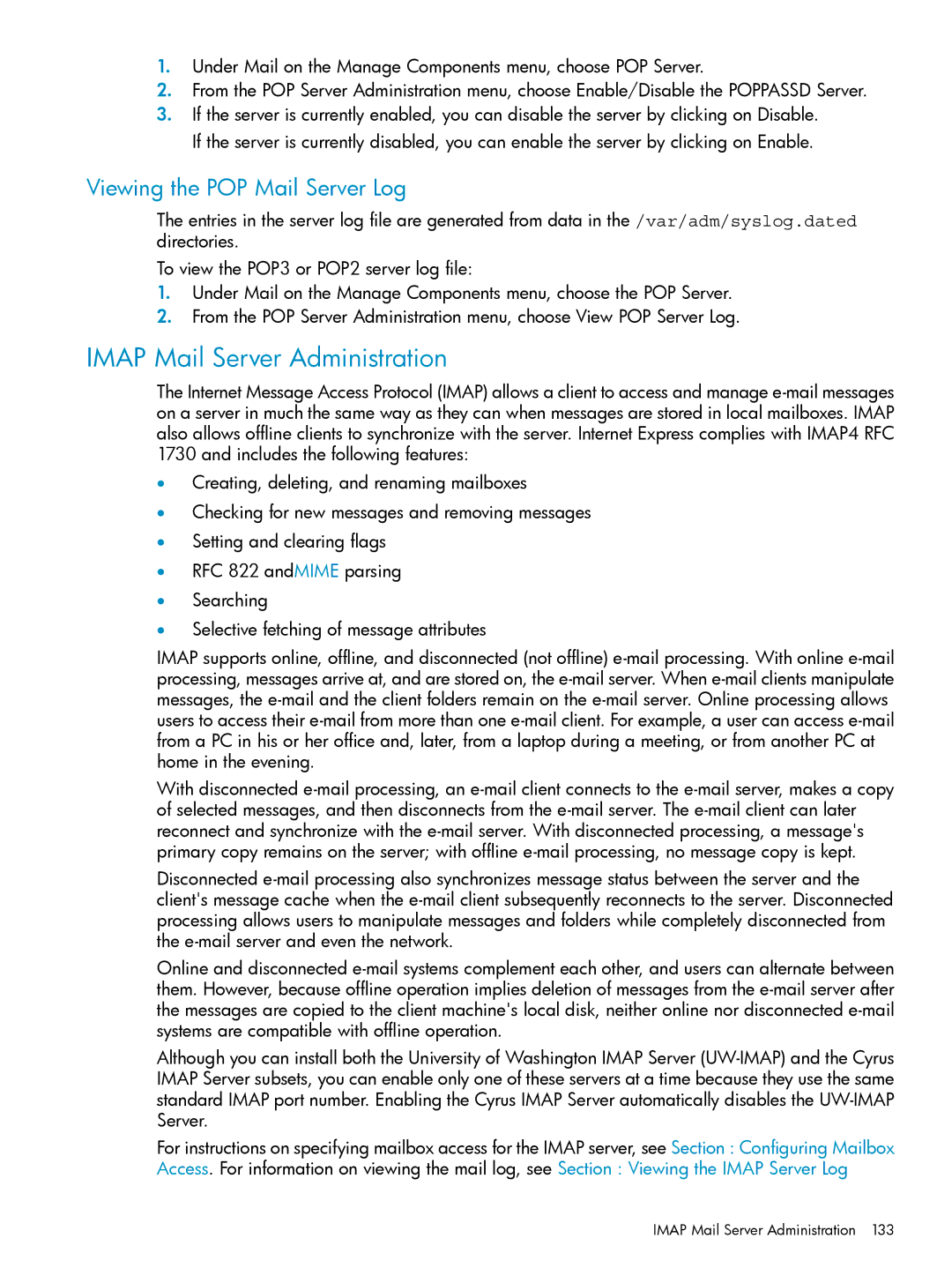1.Under Mail on the Manage Components menu, choose POP Server.
2.From the POP Server Administration menu, choose Enable/Disable the POPPASSD Server.
3.If the server is currently enabled, you can disable the server by clicking on Disable. If the server is currently disabled, you can enable the server by clicking on Enable.
Viewing the POP Mail Server Log
The entries in the server log file are generated from data in the /var/adm/syslog.dated directories.
To view the POP3 or POP2 server log file:
1.Under Mail on the Manage Components menu, choose the POP Server.
2.From the POP Server Administration menu, choose View POP Server Log.
IMAP Mail Server Administration
The Internet Message Access Protocol (IMAP) allows a client to access and manage
1730 and includes the following features:
•Creating, deleting, and renaming mailboxes
•Checking for new messages and removing messages
•Setting and clearing flags
•RFC 822 andMIME parsing
•Searching
•Selective fetching of message attributes
IMAP supports online, offline, and disconnected (not offline)
With disconnected
Disconnected
Online and disconnected
Although you can install both the University of Washington IMAP Server
For instructions on specifying mailbox access for the IMAP server, see Section : Configuring Mailbox
Access. For information on viewing the mail log, see Section : Viewing the IMAP Server Log
